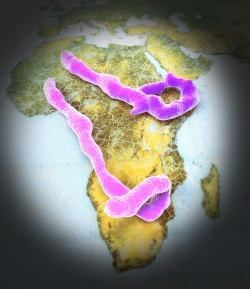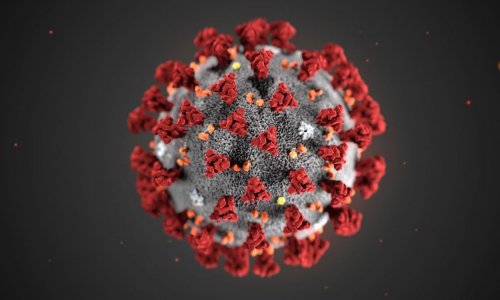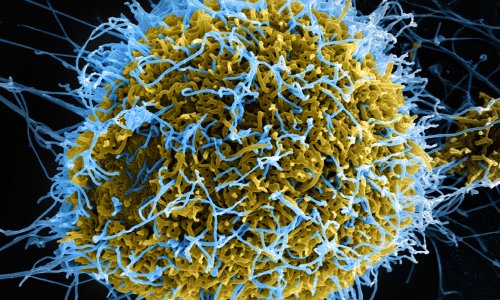Protective and human-derived
Successful isolation of a antibody against Ebola
Humabs BioMed SA and the Institute for Research in Biomedicine (IRB) affiliated to the Università della Svizzera italiana announced the identification, isolation and characterization of two Ebola virus neutralizing monoclonal antibodies from the blood of a survivor of an Ebola infection.

The results were achieved through an international collaboration with leading research institutes. As published in this week’s Science, one of the fully human antibodies is completely protective against lethal Ebola infection - even when given as single treatment and as late as five days after infection. A second publication, also in this week’s Science, identifies novel sites of vulnerability on the Ebola virus glycoprotein and reveals the molecular bases of virus neutralization by the human antibodies, providing new clues for vaccine design.
The Ebola virus causes hemorrhagic fever with a mortality rate of up to 90%. There is currently no approved Ebola therapy or vaccination. However, it is known that Ebola infection survivors carry life-long immunity preventing further infections. In a joint effort with researchers from the U.S. National Institute of Health (NIH) and the U.S. Army Medical Research Institute of Infectious Diseases (USAMRIID), Humabs BioMed and IRB were able to isolate two human antibodies against Ebola from the blood of two survivors of a 1995 Ebola outbreak 11 years after infection. Two antibodies code-named mAb100 and mAb114 demonstrated high virus-neutralizing capacity even when mAb114 was given as a monotherapy five days after infection.
Subsequently, researchers from the U.S: National Institute for Allergic and Infectious Diseases (NIAID), the Geisel School of Medicine at Dartmouth (Hanover, USA) and the School of Medicine Tsinghua University (Beijing, China) in collaboration with Humabs and the IRB characterized the targets addressed by the two antibodies. Both interfere with a glycoprotein that is essential for the binding of the virus to its host cells. This protein contains a certain loop that is being removed before the virus can enter cells. While mAb100 prevents the removal of the loop, mAb114, which is effective as a monotherapy, remains attached to the protein even after the loop is cut out. This is an entirely novel site of Ebola virus vulnerability that has never been reported to date and may open up new possibilities for the development of further preventive and therapeutic measures.
The lead mAb114 antibody is now being manufactured and developed for clinical testing with the support of the Defense Advanced Research Projects Agency (DARPA, Arlington, USA).
“These are major accomplishments in the search for a cure for Ebola,” said co-author Davide Corti, CSO of Humabs. “These data clearly demonstrate the efficiency of the Cellclone technology that delivered already several antibodies against infectious agents currently in clinical development. We believe in the therapeutic potential of mAb114 and we are very much looking forward to its clinical development.”
“Once again we have proven that Humabs is able to discover and develop anti-infective antibodies with high speed and remarkable results,” said Filippo Riva, CEO of Humabs. “This includes antibodies directed against emerging novel pathogens, such as MERS coronavirus and Zika virus. We will remain committed to developing cures against life-threatening diseases.”
“Our laboratory is committed to the identification of potent and broadly neutralizing antibodies. This is important not only to deliver new therapeutics, but also to find the Achille’s heel of a pathogen in order to design more effective and safe vaccines,” said co-author Antonio Lanzavecchia, Director of the IRB, who has developed the Cellclone technology.
Source: Humabs BioMed
26.02.2016











